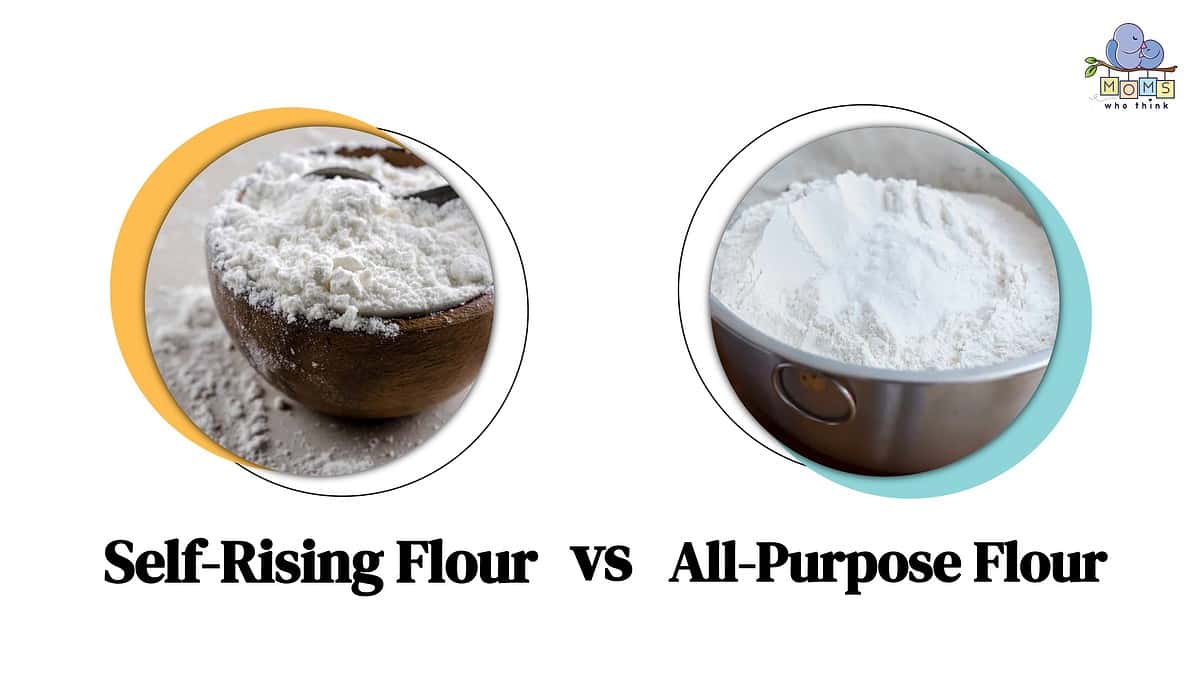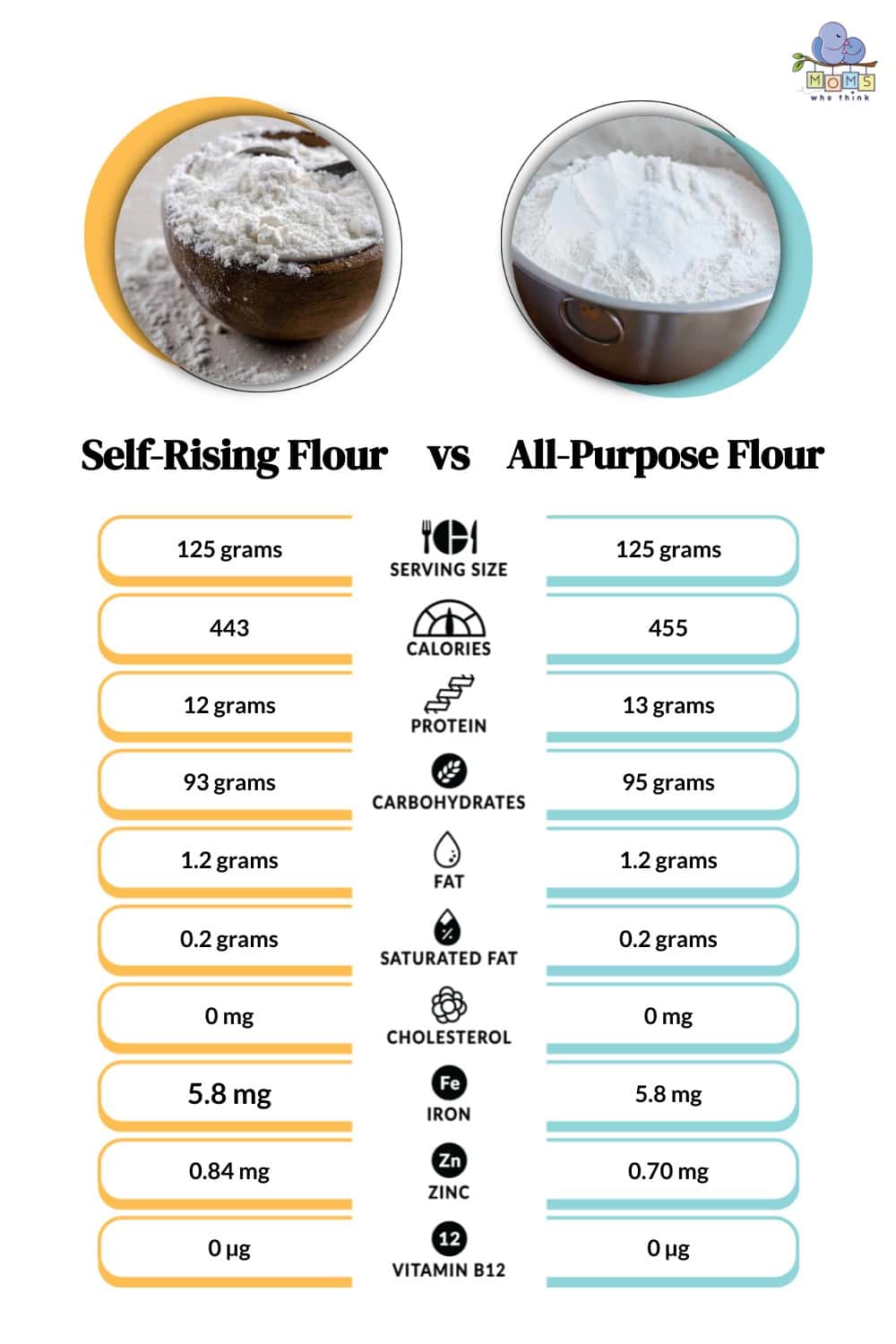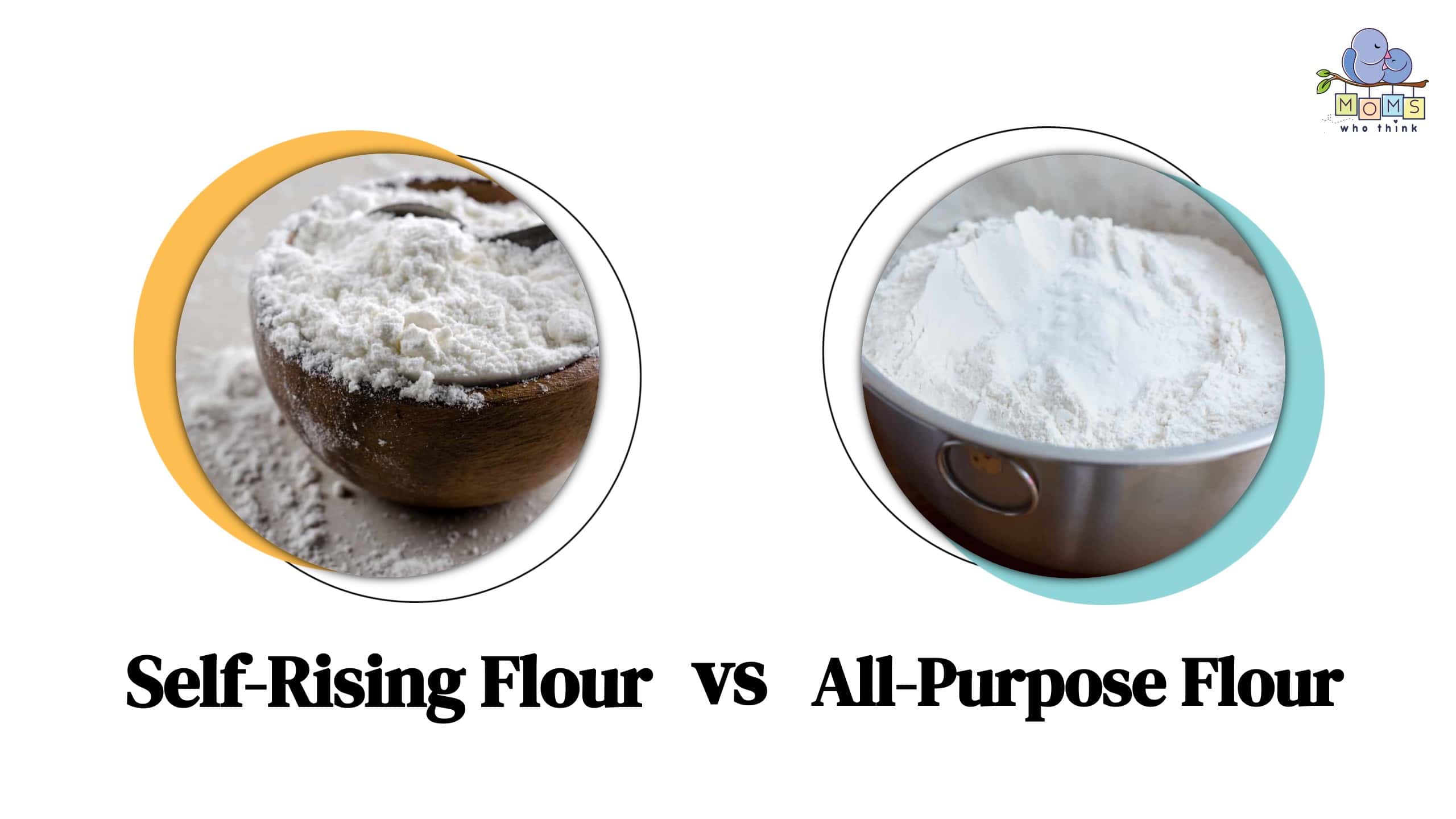Self-Rising vs. All-Purpose Flour: What's the difference? There's a huge difference when it comes to cooking and baking. It's the difference between what you're baking and how it rises. You may need to add baking powder or yeast to allow it to rise.
But is that all there is to it? What else do you need to know about these flours and how to substitute for them? Learning how to do that can make or break bread. It can be the difference maker in how you make cake.
This article covers everything you need to know about the differences between these flours. You'll learn how to substitute them, their history, and what the best recipes have these unique flours. You'll better understand why they stand apart and should be confused with one another.
Self-Rising vs. All-Purpose Flour: The Process of Making Them

Self-rising flour came out in the late 1800s as a self-rising agent. In other words, you didn't have to manually combine different ingredients to make certain recipes rise, like bread, muffins, or cakes. The work was done for you with self-rising flour. The components that composed this flour were self-raising flour, all-purpose flour, salt, and baking powder.
The popularity of self-rising flour led to the popularity of pancakes and cakes in the early 1900s because you would only need self-rising flour, eggs, and oil.
All-purpose flour has existed for over a thousand years. It's made from the wheat head’s endosperm. It's also mild-flavored white flour compared to wheat flour or other flour. All-purpose flour is the most basic kind and doesn't contain any nutritional value compared to wheat flour.
Additionally, this flour requires salt and baking powder for certain recipes to rise. The most popular recipes you can use are flour or brownies, cakes, muffins, biscuits, pot pies, and more. While self-rising flour and all-purpose flour have similar ingredients, they have some unique ingredients that make them stand out.
Why They Taste Different
While you can use them interchangeably, albeit with a few slight changes, you may notice that the taste of using either is different. For example, self-rising flour has more of a tingle taste to it. It makes it more noticeable in the food you're eating with it. Others may describe self-rising flour as having more of a salty taste because it has salt and baking powder already blended into it.
If you're baking a recipe that doesn't call for salt, you must be careful how much self-rising flour you add to it if you're substituting it for white flour. It may give what you're baking an uncalled-for salty taste.
What Are the Nutritional Differences?

The biggest difference between self-rising flour and all-purpose flour is the protein. All-purpose flour has slightly more protein in it. You'll also notice that all-purpose flour has more calories and carbohydrates.
However, one common benefit of self-rising flour and all-purpose flour is that they are both good sources of iron and protein. That's because it's made up of the endosperm of wheat grain. It also contains vitamin B3 (niacin), vitamin B2 (riboflavin), thiamine, and folic acid.
However, flour in your diet should only be in moderation, like anything. You don't want to mistake flour in bread, cakes, and whatever else you eat as a superfood. You still need to balance it with fruits and vegetables.
Recipes to Include With Either One of Them
The recipes are among the best things that come from self-rising flour and all-purpose flour. There's nothing like apple pie crust, brownies, biscuits, and other delicious recipes.
Here's a list of the most popular recipes you can make with all-purpose flour.
- Fudgy Brownies
- Chocolate Chip Cookies
- Banana Bread
- Dutch Oven Bread
- Buttermilk Pancakes
Here's a list of the most popular recipes with self-rising flour.
- Self-Rising Biscuits
- Banana Bread With Self-Rising Flour
- Homemade Pancakes
- Blueberry Scones
- Zucchini Bread
If you do decide to substitute one for the other, you must know how to do it. For example, for every cup of all-purpose flour you substitute for self-rising flour, you need to reduce the baking powder by 1 and 1/2 tsp of baking powder. You also need to reduce the salt by 1/4 tsp.
Should You Bake With Self-Rising or All-Purpose Flour?
Whatever recipe you follow, consider whether it calls for self-rising or all-purpose flour. While you can use them interchangeably with slight variations, it's also important to know how they might taste different. You should also know how to interchange them.
Self-rising flour and all-purpose flour are some of the best baking ingredients. The important thing is to know how to use them properly. When you do that, you'll end up making some delicious meals.

